2014 Acura RLX Review – Video

Imagine for a second that you are driving along a slippery snow-covered road. Despite going cautiously, you’ve overestimated the level of grip and enter a right-handed corner too fast. The car begins to plow into the other lane, pushing left in the direction physics wants to take it while you (exacerbating the situation) fight to add steering to make it turn.
FAST FACTS
| 1. A new, smaller 3.5L V6 engine gets a increase in power and fuel economy at 310 hp and a 20 mpg city, 31 mpg highway rating. |
| 2. Prevision All Wheel Steer or PAWS delivers rear steering. |
| 3. The 2014 RLX offers best-in-class rear-seat legroom. |
| 4. Available features include lane keeping assist, adaptive cruise control with low-speed follow and an autonomous braking system. |
| 5. Late this year Acura will introduce a Sport Hybrid SH-AWD model with a V6 hybrid under the hood and two rear electric motors, making 370 hp and delivering 30 mpg combined. |
In a front drive car, if you were to give a quick tug on the parking brake, the rear wheels would lock simultaneously, whipping the rear end around to properly align its wheels with those on the front of the car. With the rest of the vehicle now pointed in the same direction as the drive wheels, you could then add power and continue to head in your desired course.
An hyperbole of sorts, this is what it feels like to drive the 2014 Acura RLX (the replacement to the abysmal selling RL) thanks to a new technology the brand calls Precision All Wheel Steer, or PAWS for short.
FRONT DRIVE, REAR STEERING
Rather than using the brakes, however, the RLX has actuators attached to the rear wheels, which can change the “toe” or angle of the wheel independently. Essentially, it’s rear-wheel steering, though the adjustments are by just few degrees.
That’s all that’s necessary, however, to produce a dramatic improvement in handling; one that you notice through the general sensation of grip, rather than the perception of rear wheel angle changes.
Skilled drivers may notice the slight pivot motion as the rear aligns with the front. Tested on a auto-cross course it’s almost like faking the steer-it-with-the-throttle sensation of a rear-wheel drive car… except unlike, say, the BMW 5 Series we were provided with to test against, you don’t have to be a pro to drive the Acura.
To anyone else, the car just drives better. Dive into a corner and just when you expect understeer to take over and the car to begin plowing… it doesn’t. Instead you get this immediate sensation that it is actually well within its comfort level.
Get the Flash Player to see this player.
Dicuss this story at RLXforum.com
Amplifying just how good the RLX handles is its size. You’d wouldn’t expect a car this large to corner so well… especially not one that’s front wheel drive.
Yes, gone is the brand’s grip-tastic Super Handling All Wheel Drive (SH-AWD) system. It is set to make a return, however, in an impressive hybrid form, but not until later this year.
Being a front-driver, if there’s anything the RLX could use, it’s a limited slip differential. Arguably overkill in a machine like this, designed more for luxury cruising than sporty performance, if Acura wants to compete with brands like BMW, it wouldn’t hurt. Even one of the low-tech electronic LSDs would be a good move, and would add little to the cost of the car.
FRONT-WHEEL DRIVE HAS ITS ADVANTAGES
The PAWS system is Acura’s engineering answer to its competitors, which are all almost entirely rear-wheel drive. In many ways it levels the playing field and allows Acura to take advantage of the fuel economy and packaging advantages of a front-wheel platform. As a result Acura can claim best in class interior room and fuel economy – though that final boast is misleading.
With the footprint of a mid-size sedan, Acura says the RLX is more of a full-size inside. Compared to rivals like the Mercedes E-Class, BMW 5 Series and Lexus GS it has more shoulder and head room, while delivering as much as three-inches more legroom.
Compared to the old pointy-nose RL, it’s surprisingly no longer, though the wheels have been pushed out to each end by two inches. It’s also two inches wider, and the new design gives it a stately look more becoming of its class. That’s definitely a good thing because Acura has a real issue with its overlapping lineup of front-wheel drive sedans.
Unfortunately the RLX still doesn’t look like much, though calling it less than handsome would be unfair. Acura is perhaps timid to try anything wild after the polarizing look of the TL. A notable design highlight includes the unique headlight assembly which Acura calls “jewel eye”. With 18-inch wheels standard, 19s are optional. One Acura employee did comment under his breath that he’d like to see 20s offered to help spice up the look. It wouldn’t hurt.
The added size is obvious inside with several inches of legroom to spare even for the over six-foot crowd. Plus trunk size has grown to a best-in-class 15.3 cu-ft. Now obviously bigger than the TL, the RLX has a reason to exist.
FLAGSHIP TECH FOR A FLAGSHIP SEDAN
As the brand’s new flagship sedan it’s also introducing plenty of other new technology features, many which aren’t new to the industry, but which have been sorely lacking at Acura.
First up is adaptive cruise control with low speed follow. You just set the distance from the car ahead and a max speed and it will keep you rolling, even in stop-and-go traffic. It may sound like technology you’ll never use, but trust us, it’s one of the best convenience features money can buy and once you’ve used it, you’ll never go back.
In addition, there’s a lane keeping assist feature that will monitor the road ahead and then add steering if it detects you’re sliding out of your lane. We tested it at highway speeds, and it will keep the car in its lane as the road curves, even with no hands on the wheel! (Don’t try this at home).
Technology and features aren’t just on high-grade trims either. Starting at $48,450 the RLX gets a power tilt and telescopic steering wheel, keyless access and push button start, forward collision warning, lane departure warning plus an 8-inch screen up top to display the back up camera and available navigation, while an additional 7-inch screen directly below it is used for audio and redundant climate controls and features haptic feedback – meaning it pulses when you touch it.
The dual screens do seem redundant, though it does avoid having to switch between an audio screen and navigation screen if the car is so equipped. It also cleans up the cabin considerably, something Acura needs as its cars have historically featured dashes littered with buttons.
Rivals like Lexus solve the same issue by just having one massive 12.3-inch screen stretch across the dash, and it definitely makes more of an impact in the cabin.
Another standard feature is the latest generation AcuraLink telematics system. Through a tethered smartphone it allows a long list of apps to be brought into the car, from Pandora Internet Radio to a suite of Aha functions that can do everything from stream audio books to read your twitter and Facebook updates. Plus, vehicles equipped with navigation can also get realtime traffic updates for both highway and surface streets free for the first three years. Upgraded packages are also available offering everything from a stolen vehicle locater to a personal assistant.
PREMIUM YET SIMPLE CABIN
Certainly premium, in the usual understated Acura way it lacks the opulence of some rivals – again, the Lexus GS comes to mind. The design is clean and minimalist (perhaps too much so), though it does look modern – even the wood.
The gauges are a simple white on black, bookending a small digital multi information display screen. Adding navigation will change that screen to color, while added luxuries come with the volume Tech Package, which at $54,450 includes blind spot warning, a 14-speaker audio system, 19-inch wheels and upgraded leather.
Those in the hunt for more goodies and more luxury can get the lane keeping assist and adaptive cruise control features, along with collision mitigating braking (which will apply the brakes for you in case a collision is seen as unavoidable), vented front seats and heated rears for $60,450 in the Advance package.
UPDATED V6, SAME OLD TRANSMISSION
To better advance the big Acura down the road is a new 3.5-liter V6 engine. Smaller than last year’s 3.7-liter it gains direct injection as well as the first use of variable cylinder management (allowing it to run on just 3 cylinders) in an Acura, to deliver more power and better fuel economy.
Output is rated at 310 hp and 272 lb-ft of torque, while fuel economy is 20 mpg city, 31 mpg highway and 24 mpg combined. That is better than any of the RLX’s six-cylinder competitors, though short of the BMW 528i’s turbocharged 4-cylinder engine.
The car pulls adequately and perhaps the most surprising attribute of the powertrain is the 6-speed automatic. In an era where all of its rivals have to moved to 7-speeds (or more), having a new car with a six-speed conventional automatic is, from an engineering standpoint, downright embarrassing.
Acura is prepping a 7-speed dual-clutch unit, though it won’t arrive until the new Sport Hybrid Super Handling All Wheel Drive (SH-AWD) RLX goes on sale later this year. Still, the six-speed auto isn’t just smooth shifting, it’s excellently suited to aggressive driving. While RLX drivers aren’t likely to hit the track at Sonoma Raceway like we did, they can enjoy the fact that in Sport mode it stays in low gears for maximum acceleration and even when making mid-corner adjustments, a light lift won’t send it into a higher gear killing the throttle response.
If only Acura spent as much time fretting over the car’s design as engineers did on the mechanical bits.
The rest of the drive is perfectly suited to this segment of machine. With excellent grip, it’s masked by a smooth and quiet drive, thanks in part to a noise canceling function by the speakers. As for the steering, it’s extremely light, though responsive.
THE VERDICT
Easily a better value than German rivals, unfortunately for Acura, value isn’t the number one concern for buyers in this segment. Neither is blending in, which the RLX tends to do.
German traditionalists also won’t be won over by a front-driver, though the RLX proves that for the most part (and for buyers in this segment), which wheels the power goes to is pretty much irrelevant.
Holding true to the Acura brand reputation for going against the grain, the RLX delivers a genuinely surprising drive. Unfortunately, it’s missing the visual impact to match its engineering achievements.
An undeniably smart buy, those looking for more excitement will get it soon with a 370 hp Sport Hybrid SH-AWD model that arrives later this year. Let’s just hope it has the looks to match.
LOVE IT
- PAWS really works
- Huge interior
- Great new tech
- Plenty of luxury value
LEAVE IT
- No gotta-have-it looks
- No wow-factor under the hood
- Could use a limited slip differential

With AutoGuide from its launch, Colum previously acted as Editor-in-Chief of Modified Luxury & Exotics magazine where he became a certifiable car snob driving supercars like the Koenigsegg CCX and racing down the autobahn in anything over 500 hp. He has won numerous automotive journalism awards including the Best Video Journalism Award in 2014 and 2015 from the Automotive Journalists Association of Canada (AJAC). Colum founded Geared Content Studios, VerticalScope's in-house branded content division and works to find ways to integrate brands organically into content.
More by Colum Wood














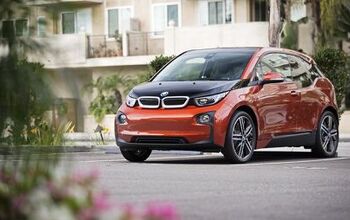
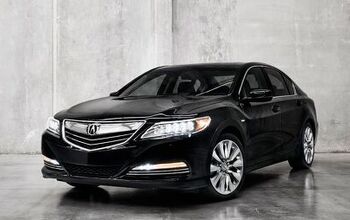

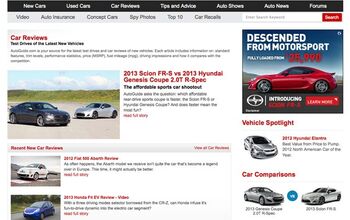




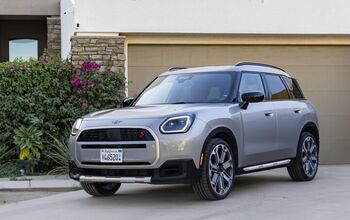







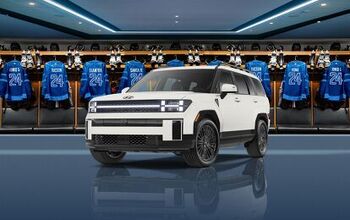
Comments
Join the conversation